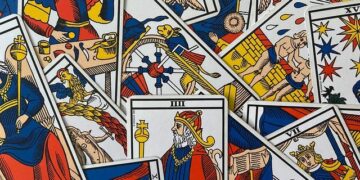Ninja Theory’s sequel is a short but emotionally gruelling game that left our reviewer exhausted
Published May 22, 2024 • 4 minute read
 In Hellblade 2, Norse warrior Senua — still suffering the terrifying psychosis players saw in the original game — is now drawing strength from her voices and visions. Photo by Microsoft
In Hellblade 2, Norse warrior Senua — still suffering the terrifying psychosis players saw in the original game — is now drawing strength from her voices and visions. Photo by Microsoft
Score: 7.5/10
Platform: Xbox Series S/X
Developer: Ninja Theory
Publisher: Xbox Game Studios
Release Date: May 21, 2024
ESRB: M
Ninja Theory’s sequel to its 2017 hit Hellblade: Senua’s Sacrifice continues the tale of the franchise’s titular protagonist, an 8th century Norse woman who hears voices and sees things no one else can. These are symptoms of what we, today, would call psychosis. People in her time understood it to be a curse.
Advertisement 2
This advertisement has not loaded yet, but your article continues below.
THIS CONTENT IS RESERVED FOR SUBSCRIBERS ONLY
Subscribe now to read the latest news in your city and across Canada.
Exclusive articles from Barbara Shecter, Joe O’Connor, Gabriel Friedman, Victoria Wells and others.Daily content from Financial Times, the world’s leading global business publication.Unlimited online access to read articles from Financial Post, National Post and 15 news sites across Canada with one account.National Post ePaper, an electronic replica of the print edition to view on any device, share and comment on.Daily puzzles, including the New York Times Crossword.
SUBSCRIBE TO UNLOCK MORE ARTICLES
Subscribe now to read the latest news in your city and across Canada.
Exclusive articles from Barbara Shecter, Joe O’Connor, Gabriel Friedman, Victoria Wells and others.Daily content from Financial Times, the world’s leading global business publication.Unlimited online access to read articles from Financial Post, National Post and 15 news sites across Canada with one account.National Post ePaper, an electronic replica of the print edition to view on any device, share and comment on.Daily puzzles, including the New York Times Crossword.
REGISTER / SIGN IN TO UNLOCK MORE ARTICLES
Create an account or sign in to continue with your reading experience.
Access articles from across Canada with one account.Share your thoughts and join the conversation in the comments.Enjoy additional articles per month.Get email updates from your favourite authors.
Sign In or Create an Account
or
Article content
Article content
The original game won praise for its faithful depiction of mental illness. The developers worked closely with both psychologists and people who suffer psychosis to recreate the experience within the game, and they returned to help with the sequel.
What they’ve created is both disorienting and chilling.
Voices constantly whisper in the player’s ears at varying volumes and from different directions. It’s difficult to tell if what we see is real, whether it’s one of Senua’s visions, or perhaps some strange combination of the two. Seemingly random symbols within the world are invested with meaning and importance, serving as guideposts for Senua’s quest.
 Senua’s Saga: Hellblade 2 screenshot. Photo by Microsoft
Senua’s Saga: Hellblade 2 screenshot. Photo by Microsoft
Senua spent the first game coming to terms with her unique experience of the world. She journeyed to Helheim, ostensibly for the sake of finding her dead lover, but really to confront her own demons, control them, and to learn how to live in a parallel reality. The game ended with the sense that Senua would not just survive but that she could become a hero to her people.
Recommended from Editorial
Rise of the Ronin review: Falls short of its potential, but still good fun
Final Fantasy VII Rebirth review: Moving beyond Midgar
Mario vs. Donkey Kong review: You want us to pay what now?
By signing up you consent to receive the above newsletter from Postmedia Network Inc.
Article content
Advertisement 3
This advertisement has not loaded yet, but your article continues below.
Article content
The sequel picks up with her as just that: A warrior saviour.
Or, at least, that’s what she’s trying to be.
In the opening scene we learn Sunua has allowed herself to be captured by a group of slavers that have been targeting her tribe. Her plan is to discover where they come from and end the threat at its source. But when her ship capsizes and she finds herself lost and alone on a stormy foreign shore, she realizes that this land is beset by a monstrous evil of its own, and she’ll need to summon all her strength to face it.
 Senua’s Saga: Hellblade 2 screenshot. Photo by Microsoft /Microsoft
Senua’s Saga: Hellblade 2 screenshot. Photo by Microsoft /Microsoft
Senua’s Saga aims for deep immersion and intuitive play. You won’t find a head’s-up display, health bars, or even any menus of skills and objectives. We experience and see what Senua experiences and sees, which means, like her, we’re left to figure stuff out on our own — including the controls.
Working out how to swing a weapon, interact with an object, or even just jog rather than walk can be a little irksome at the beginning, but it’s not too tricky. And playing on easier difficulty settings makes the intense sword-based combat — which is rendered with near photorealism, bloody blows coming with such force that I found myself moving in my chair to help Senua dodge them — much more forgiving. I was able to find my footing in most fights with minimal frustration.
Advertisement 4
This advertisement has not loaded yet, but your article continues below.
Article content
But combat isn’t all that frequent. The story Ninja Theory is trying to tell is much more about what’s going on in Senua’s head rather than in the real world.
 Senua’s Saga: Hellblade 2 screenshot. Photo by Microsoft /Microsoft
Senua’s Saga: Hellblade 2 screenshot. Photo by Microsoft /Microsoft
You’ll spend long stretches simply pushing the left joystick forward to make Senua trudge onward. She is constantly assaulted by voices that, one moment, provide encouragement to propel her onward, then speak her deepest, darkest fears the next. Senua’s journey through desolate landscapes and devastated villages isn’t just about getting from point A to point B, it’s a part of the narrative, a fundamental aspect of the game itself
It’s worth noting that Melina Juergens, the actor behind Senua, gives it her absolute all, delivering a motion — and emotion — capture performance on par with mocap greats like Andy Serkis. She is a fierce firestorm of fear, anguish, courage, and rage for eight straight hours. It’s exhausting just to watch.
 Senua’s Saga: Hellblade 2 screenshot. Photo by Microsoft /Microsoft
Senua’s Saga: Hellblade 2 screenshot. Photo by Microsoft /Microsoft
And there’s the rub: Senua’s Saga isn’t really a fun game. I didn’t have a “good time” playing.
Instead, it’s a piece of art. A thing that makes you think, feel, and perhaps even learn; something that you appreciate rather than enjoy. Ninja Theory’s storytelling chops, technical acumen, and creative energy are on full display, and I respected and admired what I experienced.
That said, I didn’t feel an urge to endure more than I had to. Senua’s Saga: Hellblade 2 is an emotionally gruelling game, an unrelenting assault on the senses filled with brutal depictions of psychological and physical suffering. It makes for gripping storytelling, but it also left me drained.
I think I need to go play some Pac-man.
Bookmark our website and support our journalism: Don’t miss the business news you need to know — add financialpost.com to your bookmarks and sign up for our newsletters here.
Article content
>>> Read full article>>>
Copyright for syndicated content belongs to the linked Source : Financial Post – https://financialpost.com/technology/gaming/senuas-saga-hellblade-2-review-game































